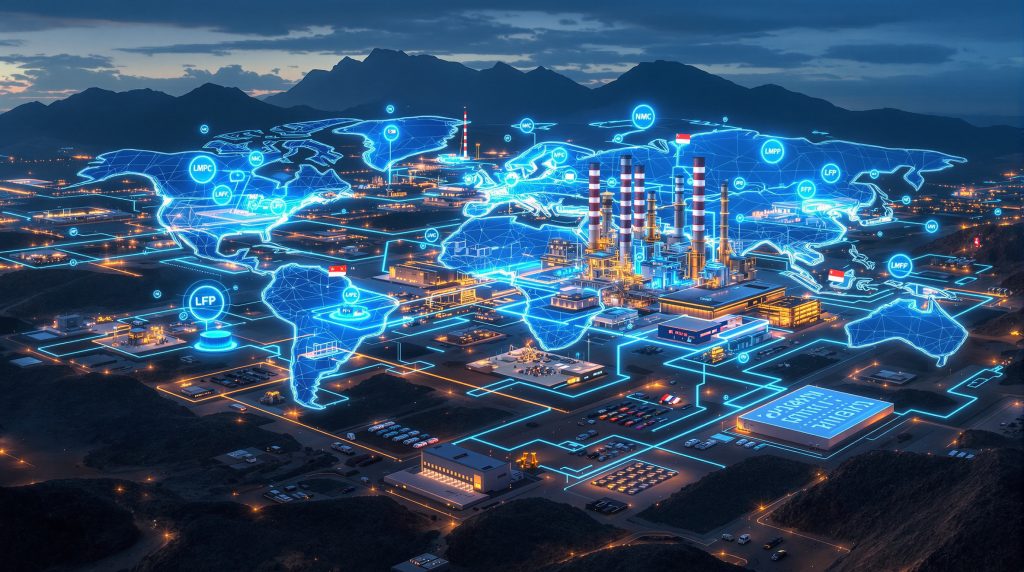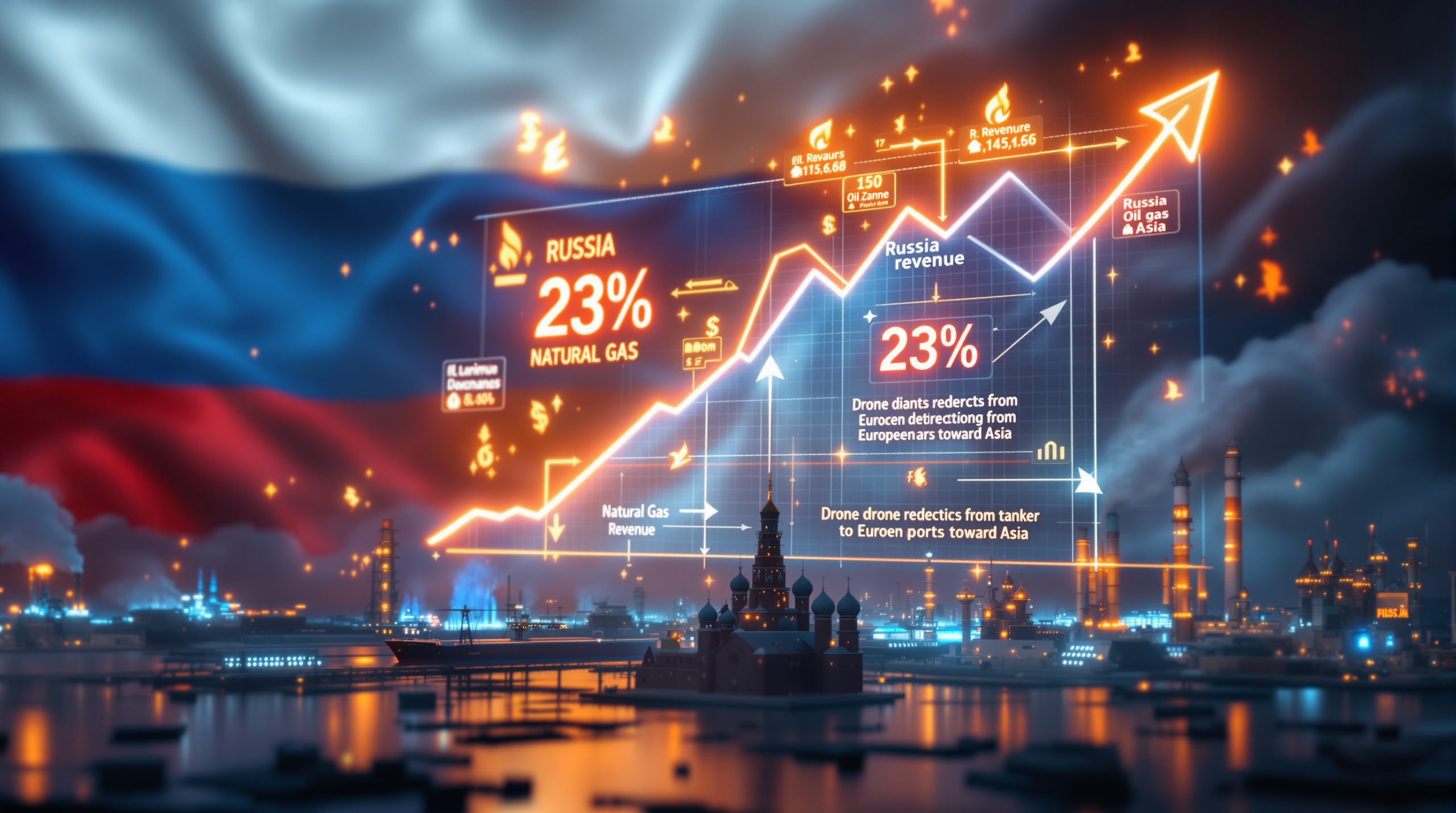Why is the Battery Supply Chain Becoming a Geopolitical Battleground? The transition to electrification has fundamentally transformed batteries from simple components into strategic assets that define economic and political influence. Nations are now engaged in intense competition to control various segments of the battery value chain, recognizing that dominance in this sector translates directly to geopolitical power in the 21st century economy. The battery industry represents not just technological advancement but a reshaping of global industrial power. With projections indicating a $360 billion global market by 2030, countries that secure strong positions in this ecosystem gain significant advantages in both economic development and energy security. The Economic Stakes of Battery Dominance The economic implications of the global race for battery supply chain control extend far beyond simple manufacturing advantages. Countries that establish leadership positions gain multiple strategic benefits: Control over critical minerals worth over $150 billion annually Creation of high-value manufacturing jobs (estimated 10-15 jobs per MWh of production capacity) Technological leadership in the clean energy transition Reduced vulnerability to supply disruptions and price volatility This race for dominance has intensified as battery technologies become increasingly central to national security interests. Battery materials are now considered strategic resources, similar to how oil dominated geopolitical considerations in the 20th century. Current market volatility underscores these strategic concerns. South Korean battery producers operated at only 50% utilization rates in the first half of 2025, highlighting how quickly market conditions can shift and creating urgency for countries to establish more resilient domestic supply chains. How Are Gigafactories Reshaping Industrial Power? Gigafactories—manufacturing facilities producing at least 10 gigawatt-hours of batteries annually—have become the industrial backbone of the electric revolution. These massive production centers are dramatically altering production economics through unprecedented scale and integration. The emergence of these manufacturing titans has transformed the landscape of industrial production, creating new centers of economic activity and reshaping traditional manufacturing regions. Countries and regions without gigafactory capacity risk being left behind in the critical minerals energy transition. The Scale Revolution in Battery Production The emergence of gigafactories has transformed battery economics through unprecedented scale: Impact of Gigafactory Scale Metric Cost reduction in battery production ~90% price drop over the past decade Typical minimum production threshold 10+ GWh annually Average construction timeline 24-36 months Typical investment requirement $1-2 billion per 10 GWh capacity Employment creation 1,000-3,000 direct jobs per facility This dramatic scaling has made electric vehicles competitive with traditional combustion engines for the first time, accelerating the transition to electrified transportation. The economics of gigafactory production continue to improve as automation, process efficiencies, and material innovations drive costs down further. Regional Gigafactory Development Strategies Different regions are pursuing distinct approaches to gigafactory development, reflecting their industrial strengths, policy priorities, and strategic objectives: China: Focusing on massive scale and vertical integration, with facilities exceeding 100 GWh capacity to maintain its dominant position Europe: Emphasizing sustainability and premium segment batteries for luxury EVs, with specialized production in countries like Finland and Hungary North America: Leveraging policy support through the Inflation Reduction Act to build domestic capacity and reduce dependence on imports South Korea: Specializing in high-performance batteries with advanced technology despite recent utilization challenges India: Targeting cost-effective production for domestic markets and emerging economies with focus on LFP and other affordable chemistries These regional approaches highlight how gigafactories have become central to industrial policy, with governments offering significant incentives to attract battery metals investment. What Makes Battery Chemistry the New Competitive Frontier? Battery chemistry decisions determine performance characteristics, cost structures, and raw material requirements—making them central to competitive strategy in the global race for battery supply chain control. Behind every gigafactory lies a critical component: cathode active materials (CAM) and their precursors (PCAM). These account for approximately 40% of battery costs and dictate key performance factors including charging speed, driving range, and safety characteristics. Strategic Implications of Battery Chemistry Choices Different battery chemistries create distinct competitive advantages: Chemistry Type Key Advantages Strategic Implications NMC (Nickel-Manganese-Cobalt) Higher energy density, longer range Premium positioning, reduced weight LFP (Lithium Iron Phosphate) Lower cost, longer cycle life, enhanced safety Mass market accessibility, reduced fire risk LMFP (Lithium Manganese Iron Phosphate) Improved energy density over LFP at moderate cost Bridging performance and affordability Sodium-ion Independence from lithium supply chains Strategic hedge against lithium constraints These chemistry choices have profound implications for national competitiveness and market positioning. Countries with advanced capabilities in specific chemistries can create strategic advantages in certain market segments, from premium vehicles to mass-market applications. The Shifting Landscape of Chemistry Adoption The battery chemistry landscape is evolving rapidly as manufacturers adapt to changing market conditions, material availability, and consumer preferences: LFP chemistry has grown from 10% to over 30% of the global EV battery market since 2020 Premium automakers are increasingly adopting NMC811 for flagship models to maximize range LMFP is emerging as a "best of both worlds" solution for mid-market applications Sodium-ion batteries are moving from laboratory to commercial production as a potential disruptor This chemical diversity creates both challenges and opportunities in the global race for battery supply chain control. Countries must decide whether to specialize in specific chemistries or develop capabilities across multiple technologies to maximize flexibility. Where Are the Geographic Bottlenecks in the Battery Supply Chain? The battery supply chain exhibits significant geographic concentration at different stages, creating strategic vulnerabilities and opportunities for countries seeking to establish or strengthen their positions. This concentration creates chokepoints that can disrupt the entire value chain, as demonstrated by recent events like the DRC's announcement of an export ban on cobalt intermediates, which tightened China's cobalt supply in the second half of 2025. Critical Mineral Extraction Concentration Raw material extraction shows significant geographic concentration: Lithium: Australia (48%), Chile (31%), and Argentina (9%) dominate extraction Cobalt: Democratic Republic of Congo accounts for 70% of global production Nickel: Indonesia (37%), Philippines (13%), and Russia (9%) lead production Graphite: China (79%), Brazil (8%), and Mozambique (7%) control natural graphite supply This geographic concentration of raw materials creates inherent vulnerabilities in the battery supply chain, as political instability, export restrictions, or natural disasters in key producing regions can quickly disrupt global supplies. Processing and Manufacturing Bottlenecks The midstream processing stages show even greater concentration: China processes approximately 90% of global lithium, 72% of cobalt, and 65% of nickel for batteries Chinese firms produce over 75% of all lithium-ion battery cells globally South Korean producers operated at only 50% utilization rates in H1 2025, highlighting capacity challenges European cathode production remains limited, with significant expansion planned but not yet operational This concentration in processing and manufacturing represents both a vulnerability for global supply chains and an opportunity for countries seeking to diversify production. Nations that can establish processing capabilities gain significant leverage in the battery value chain. How Are Nations Competing to Reshape Battery Supply Chains? Countries are implementing diverse strategies to strengthen their positions in the battery value chain, recognizing that control over this critical technology will define economic competitiveness in the coming decades. These national strategies reflect different priorities, resources, and industrial capabilities, creating a complex global landscape of competition and occasional cooperation in the critical minerals geopolitics arena. North American Supply Chain Initiatives The United States and Canada are pursuing aggressive policies to build domestic capabilities: $1 billion in U.S. Department of Energy funding for critical minerals processing IRA tax credits providing up to $45/kWh for domestically produced battery cells Canadian Critical Minerals Strategy targeting five-fold increase in processing capacity North American focus on carbon-neutral PCAM and CAM manufacturing These initiatives aim to reduce dependence on imports, particularly from China, while creating high-value manufacturing jobs and securing supplies of critical materials for defense and civilian applications. European Battery Alliance Approach Europe is working to establish a complete battery ecosystem: €6 billion in public-private investment for battery research and manufacturing Finland and Hungary emerging as key locations for CAM facilities EU Battery Regulation mandating sustainability and recycled content Strategic partnerships with resource-rich nations to secure raw material access The European approach emphasizes sustainability and circularity while attempting to build capacity across the entire value chain, from raw materials to recycling. Asian Manufacturing Dominance and Evolution Asian nations continue to lead in manufacturing while adapting their strategies: China shifting focus to next-generation chemistries and automated production South Korea specializing in high-performance NMC batteries for premium applications despite recent utilization challenges Japan focusing on solid-state battery development for technological leadership Indonesia transforming from raw nickel exporter to integrated battery producer These evolving strategies reflect the shifting competitive landscape as first-movers work to maintain their advantages while emerging players seek to establish positions in this growing market. What Constraints Are Limiting Battery Supply Chain Development? Despite significant investment, several factors constrain the expansion of battery supply chains, creating challenges for even the most ambitious national strategies. Understanding these constraints is essential for developing realistic policies and business strategies that can overcome bottlenecks and accelerate battery supply chain development. Technical and Infrastructure Limitations Multiple technical challenges impede rapid scaling: Long lead times (3-5 years) for developing new mines and processing facilities High capital costs for CAM facilities ($100-200 million per GWh of capacity) Limited skilled workforce in battery engineering and manufacturing Insufficient testing and certification infrastructure in emerging markets These technical constraints mean that even well-funded initiatives face significant delays in bringing new capacity online, creating persistent gaps between policy ambitions and implementation realities. Financing and Risk Management Challenges Financial considerations also create bottlenecks: Volatile raw material prices complicating investment decisions Limited financing mechanisms for battery supply chain projects Uncertain long-term demand forecasts creating investment hesitation Geopolitical risks affecting cross-border supply chain development These financial challenges can delay or derail even technically sound projects, particularly in emerging markets or for new entrants without established track records in battery production. How Will Recycling Transform Battery Supply Chain Dynamics? Recycling is emerging as a critical component of battery supply chain strategy, with significant implications for resource security and sustainability. As batteries from the first generation of mass-market electric vehicles reach end-of-life, recycling infrastructure is becoming essential for both environmental protection and material recovery through innovative battery recycling breakthrough technologies. Recycling as a Strategic Resource Battery recycling offers multiple strategic advantages: Recovery of up to 95% of critical minerals from end-of-life batteries Reduced dependence on volatile primary raw material markets Lower environmental footprint compared to primary extraction Creation of domestic "urban mining" industries independent of resource geography These benefits make recycling not just an environmental imperative but a strategic necessity for countries seeking to strengthen their positions in the battery supply chain. Regulatory Drivers and Industry Response Policy initiatives are accelerating recycling development: EU mandates requiring 6% recycled lithium and nickel, and 16% recycled cobalt in batteries by 2030 China's battery producer responsibility system requiring 98% recovery rates Industry investment in hydrometallurgical recycling technologies Integration of recycling considerations into battery design These regulatory frameworks are creating predictable markets for recycled materials, driving investment in collection infrastructure and processing technologies while encouraging manufacturers to design batteries with recycling in mind. What Will the Future Battery Supply Chain Look Like? The battery supply chain is evolving toward a more diversified and regionalized structure, with several key trends emerging that will shape the competitive landscape in the coming decade. This evolution reflects both technological changes and policy interventions designed to create more resilient and sustainable supply chains in the global race for battery supply chain control. Emerging Regional Battery Ecosystems The global landscape is becoming more regionally balanced: North America developing a complete supply chain from mining to manufacturing Europe establishing a sustainability-focused battery production system Southeast Asia emerging as a key processing hub for battery materials South America leveraging lithium resources to move up the value chain This regionalization is reducing single-source dependencies while creating distinct competitive advantages for different regions based on their natural resources, industrial capabilities, and policy frameworks. Technology Shifts and Supply Chain Implications Technological evolution will reshape supply chain requirements: Solid-state batteries potentially reducing cobalt and nickel dependence Silicon anodes decreasing graphite requirements Structural batteries integrating into vehicle components AI-optimized battery management extending lifespan and performance These technological shifts will create both disruptions and opportunities, potentially reducing dependencies on some critical materials while creating new requirements for others through continuous lithium battery innovations. FAQs About the Global Battery Supply Chain Race Which Countries Control the Most Critical Battery Materials? The control of battery materials varies by element and processing stage: Raw material extraction: Australia (lithium), Indonesia (nickel), DRC (cobalt) Material processing: China dominates with 90% of lithium, 72% of cobalt, and 65% of nickel processing Component manufacturing: China produces 75% of cathodes and 85% of anodes globally Cell production: China (70%), South Korea (15%), Japan (10%), and others (5%) This concentration creates both strategic vulnerabilities and competitive advantages, with countries working to address gaps in their capabilities while leveraging existing strengths. How Are Trade Policies Affecting Battery Supply Chains? Trade policies are significantly reshaping battery supply chains: Tariffs on Chinese batteries and components driving manufacturing relocation Export restrictions on processing technologies limiting knowledge transfer Free trade agreements creating preferential corridors for battery materials Local content requirements forcing regionalization of production These policy interventions are accelerating the diversification of supply chains while creating new patterns of trade and investment in the battery supply chains at a crossroads. What Role Will AI Play in Battery Supply Chain Optimization? Artificial intelligence is transforming battery supply chains through: Predictive maintenance reducing downtime in manufacturing Supply chain visibility enhancing resilience and responsiveness Automated quality control improving yield and performance Resource optimization reducing waste and environmental impact These AI applications are helping manufacturers overcome some of the constraints that have limited battery supply chain development, from workforce limitations to process inefficiencies. Strategic Implications of the Battery Supply Chain Race The competition for battery supply chain control has far-reaching implications beyond the energy transition. Nations that secure advantageous positions will gain economic benefits, technological leadership, and enhanced energy security. This race is accelerating investment in alternative technologies, domestic production, and recycling infrastructure as countries seek to strengthen their positions across the value chain. As the battery landscape evolves, we can expect increased regionalization, with specialized hubs emerging for different components and chemistries. The winners will likely be those who can balance scale, innovation, sustainability, and supply chain resilience—creating an integrated ecosystem from raw materials to recycling. The global race for battery supply chain control is ultimately a race for industrial leadership in the 21st century. Countries that successfully navigate the technical, financial, and policy challenges will gain significant advantages in the clean energy economy, establishing positions of influence that will endure for decades to come. Want to Catch the Next Major ASX Mineral Discovery? Discovery Alert's proprietary Discovery IQ model instantly notifies investors of significant ASX mineral discoveries, converting complex exploration data into actionable insights that could lead to substantial returns. Explore historic examples of exceptional mining discoveries and their market impact at the Discovery Alert discoveries page and position yourself ahead of the market.

Paleogeography of the Precambrian Belt Supergroup: Ancient Continental Connections
Discover how the ancient Precambrian Belt Supergroup reveals Earth’s paleogeography



